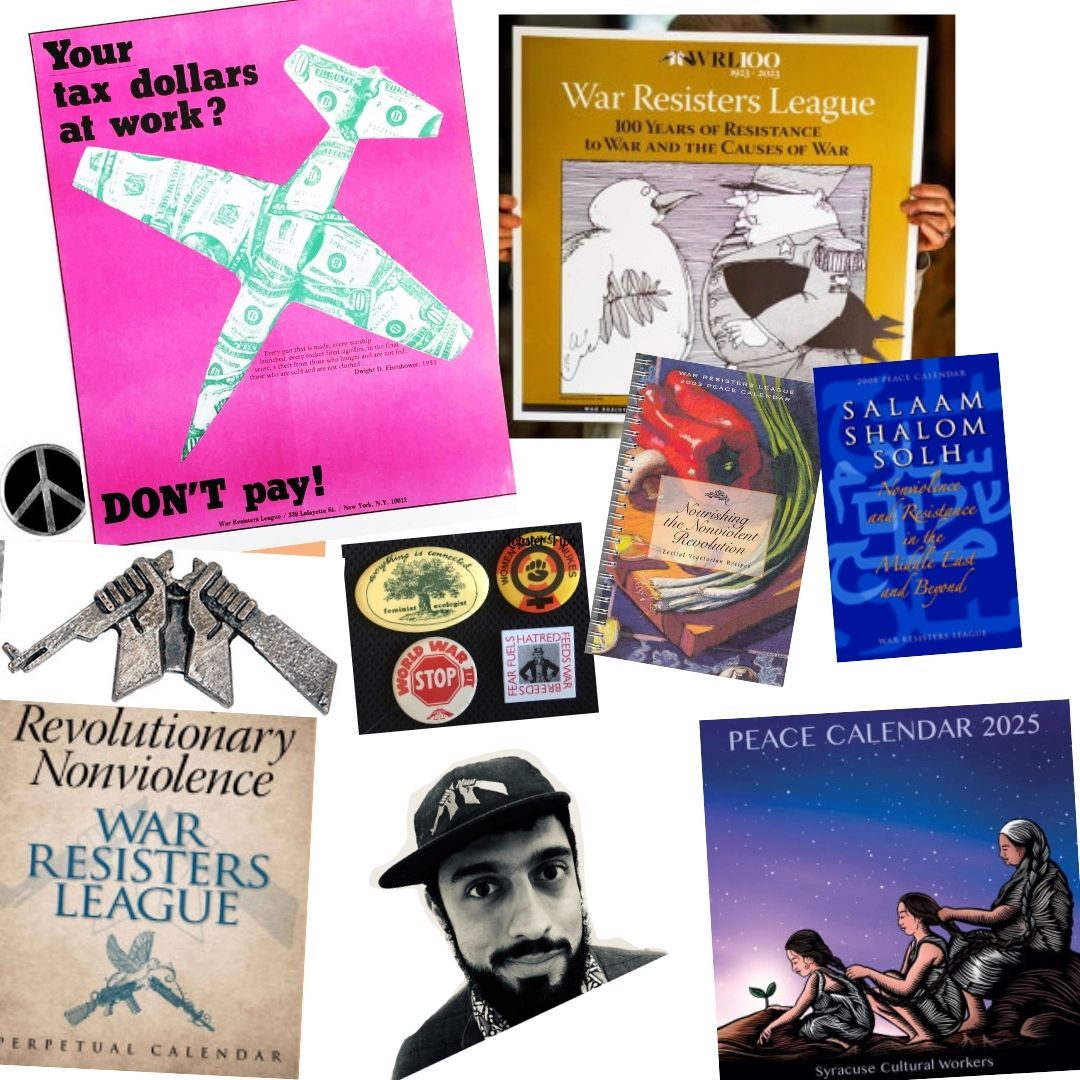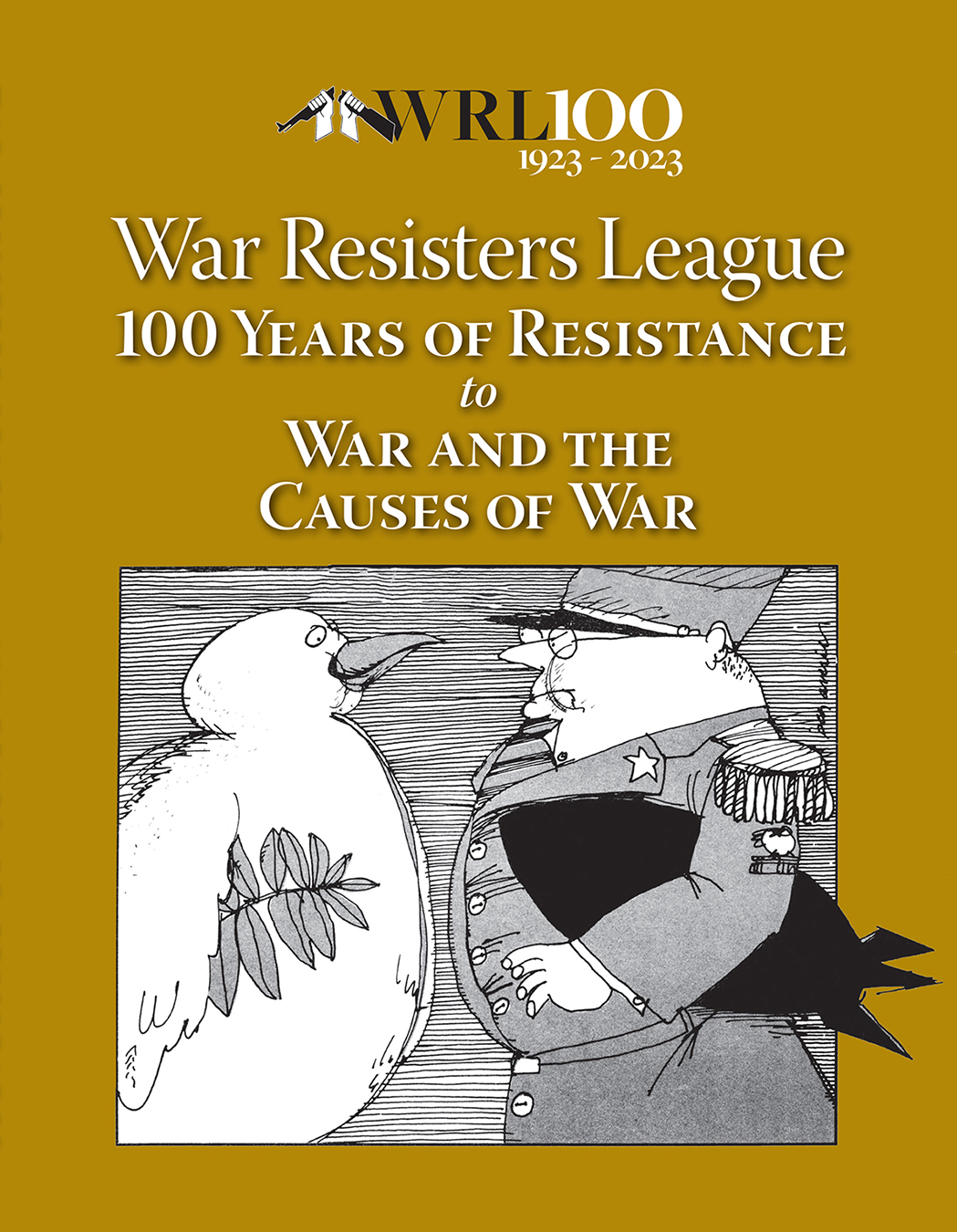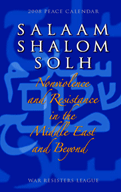
After leaving 5 Beekman Street with a very light load—courtesy of the FBI theft—WRL and its peace group mates moved to 339 Lafayette Street at the western edge of the East Village. (For the story of WRL’s pre-Lafayette Street homes, see Home Is Where WRL Is: A History of WRL’s Offices, Part I: From a Living Room to a Loft.)
WRL’s Lafayette Street tenure, from 1969 to 2016 was storied: the building became known worldwide as the Peace Pentagon.

339 Lafayette Street in October 1981, photo by David McReynolds
WRL rented the two top loft floors above stores. At first there was an antique store whose diverse wares covered the sidewalk and sometimes the door to the offices, and a restaurant that had a resident bookie for evening off-track betting. Nearby were manufacturing outfits, a liquor store that often had an early queue of customers waiting before its 8 am opening, and diners catering to hard-labor workers with heart-attack-on-a-plate massive meals. An adjacent rag factory made the cost of WRL’s insurance sky high.
WIN’s Maris Cakars, with substantial support from WRL’s Ralph DiGia, undertook a major effort called Moving the Movement. It was tasked to raise money for the move and the division of the floors into offices for about eight groups.
When the third floor was still one huge open space, WRL held a large celebratory Saturday night party, with music and food/drink. Mercifully, there was just one major hitch: a toilet paper shortage. Less mercifully, as I was rushing down the stairs to replenish the supply, I nearly knocked Allen Ginsberg, wearing a massive leg cast and leaning on crutches, down the stairs. Fortunately, he retained his balance and I found a store open in a neighborhood that pretty much closed itself after 5 pm on Friday.
The offices had floor-to-ceiling windows facing west; in the summer the heat in them was intense. I began my tenure at the Peace Pentagon working for WIN. To prepare the magazine for publication, we slaved over a hot light table and sometimes singed the hair off our arms using a hot wax gun to paste printed text into WIN layout. We kept hydrated by drinking beer all day. Abby Hoffman stopped by once, helped himself to a can of Ballantine’s, and going round and round in Maris’ swivel chair for quite a while.
After I moved to the WRL staff, the executive committee decided to purchase air conditioning for the office but, sadly, not before I had burned the backs of my legs on a scorching vinyl chair. Ralph was afraid we would be “pampering” ourselves, but David McReynolds made the point that a staff not worried about passing out from heatstroke would be more productive, not to mention less cranky.
Our first year in the Peace Pentagon coincided with the Mets’ winning the World Series. The city gave the team a ticker tape parade that passed under our windows. A contingent from the building shouted greetings from the roof. We unfurled the first of many huge peace banners to hang over the side.

Talks Not Troops Banner on Peace Pentagon at 339 Lafayette Street, January 1991. Photo by Ed Hedemann
In 1974, WRL, forced to buy the building or face eviction, opted for the former. Shortly thereafter, the A.J. Muste Memorial Institute (now called the A.J. Muste Foundation for Peace and Justice) was founded with a goal of purchasing the building from WRL and taking over its management.
Unfortunately, by 2016 the Peace Pentagon had fallen into dangerous disrepair, and the Institute was unable to raise funds to restore it.
So the building was sold and a pacifist icon was gone. In the 47 years that WRL occupied the Peace Pentagon, hundreds of activists from around the world visited for chats, meetings, conferences, and nonviolent trainings. Countless articles were written about it, and famous peace activists, such as Joan Baez and Ed Asner, visited.
Kith, a “lifestyle and fashion brand,” now occupies the building. Kith sells “top-tier” sneakers ($240) and other apparel (e.g., a sweatshirt hoodie for $210). There is an art gallery on the second floor, a cereal bar, and “plaster-casted Air Force 1 columns” throughout.
WRL and some of the other Peace Pentagon tenants moved to Canal Street in Manhattan’s Chinatown. It was a much smaller space and the Institute was again the landlord. After five years, in the middle of the pandemic, the Institute relinquished the space.
WRL national office staff are now dispersed among several locations.
While the Peace Pentagon no longer exists as a brick-and-mortar location, for those of us who called it a home-away-from home it lives on in our hearts.
Wendy Schwartz
Wendy Schwartz was the executive director of the A.J. Muste Memorial Institute at the time it purchased the Peace Pentagon from WRL and for several years thereafter.





